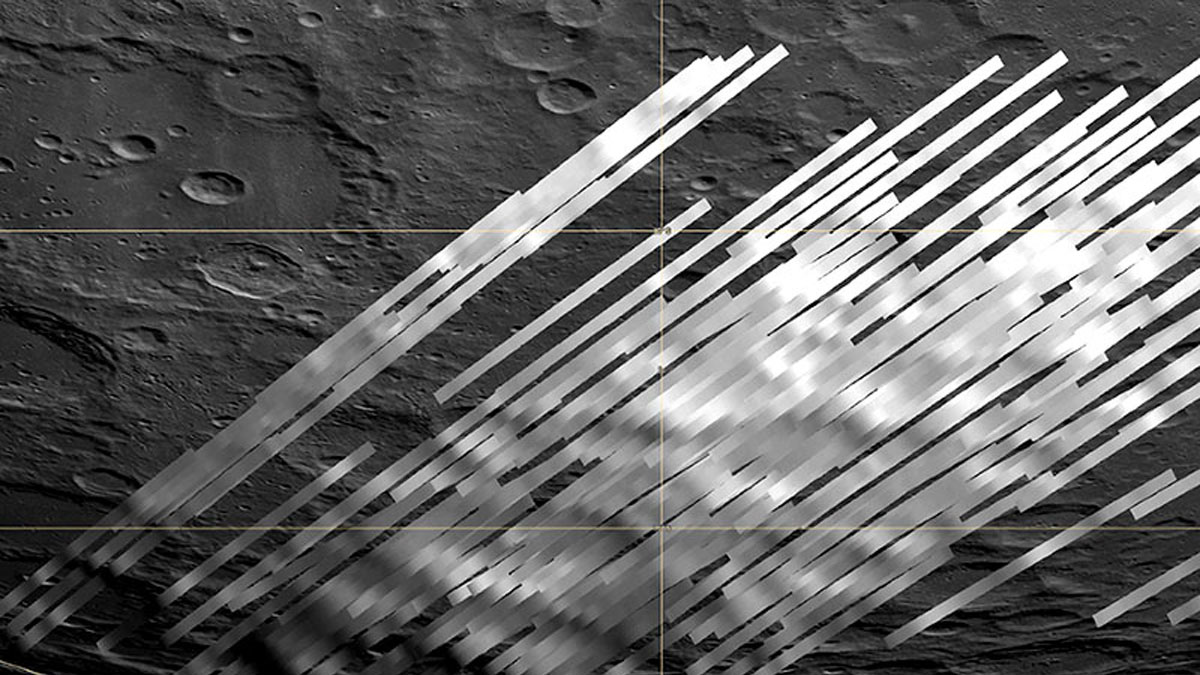New observations by the flying telescope SOFIA confirmed there is water on the illuminated surface of the moon. Observations made in 2020 first suggested that water might be present on Earth's celestial companion outside of the permanently shadowed polar craters. The new observations confirm these suggestions and hint that there might be even more water than previously thought.
SOFIA , or Stratospheric Observatory for Infrared Astronomy, is a NASA-led mission, which observes the universe in infrared light from aboard a converted Boeing 747. The observatory, which made the 2020 discovery, has now detected molecular water around the Moretus Crater near the moon 's south pole. Related: Future moon astronauts using water ice may rely on ancient lunar volcanoes The presence of water outside of the permanently shadowed areas can shed light on the origin of lunar water, the scientists behind the observations said in a statement (opens in new tab) .
In 2020, water was detected around the nearby Clavius Crater, but that data was deemed 'insufficient'. The new study, the researchers said, included a larger number of observations. In fact, the new measurements were so detailed they allowed the team to create a map of water distribution in the Moretus Crater region, which shows how the abundance varies depending on temperature and latitude: the closer to the pole and the lower the temperature, the more water there is.
"Water on the moon is exciting because it allows us to study the processes that occur not only on the moon, but also on other airless bodies," Casey Honniball, a postdoctoral fellow at NASA's Goddard Space Flight Center in Greenbelt, Maryland, who led the study, said in the statement. "[Water] is of extreme importance as a resource for human exploration. If you can find [sufficiently] large concentrations of water on the surface of the moon — and learn how it's being stored and what form it's in — you can learn how to extract it and use it for breathable oxygen or rocket fuel for a more sustainable presence.
" SOFIA made the measurements using its FORCAST instrument, an infrared camera optimized to study planet-like objects. By overlying the data on a three-dimensional map of the moon's surface, the scientists could visualize the water distribution in detail. SOFIA, flying above 99% of the water vapor content in Earth atmosphere , can better distinguish between molecules of water and hydroxyl (OH) than ground-based telescopes.
Hydroxyl, which contains only one hydrogen atom instead of the two present in water, is more abundant on the moon because it's directly produced in the interactions between the solar wind and the lunar soil. "The moon is constantly being bombarded by solar wind, which is delivering hydrogen to the lunar surface," Honniball said. "This hydrogen interacts with oxygen on the lunar surface to create hydroxyl.
" — Some of the moon's water may come from Earth, study suggests — Space miners may use rockets to harvest the moon's water ice (video) — China's moon sample-return mission finds water evidence twice over Water arises from this hydroxyl when the moon's surface heats up during micrometeorite strikes, the researchers said. A large portion of this water evaporates into space but some remains trapped in the lunar rocks. Scientists will learn in great detail how much water there really is around the moon's south pole after 2024 when NASA's Volatiles Investigating Polar Exploration Rover (VIPER) starts its mission.
SOFIA, in the meantime, will conclude its mission at the end of September. The study (opens in new tab) was published in the journal Geophysical Research Letters. Follow Tereza Pultarova on Twitter @TerezaPultarova .
Follow us on Twitter @Spacedotcom and on Facebook . .

